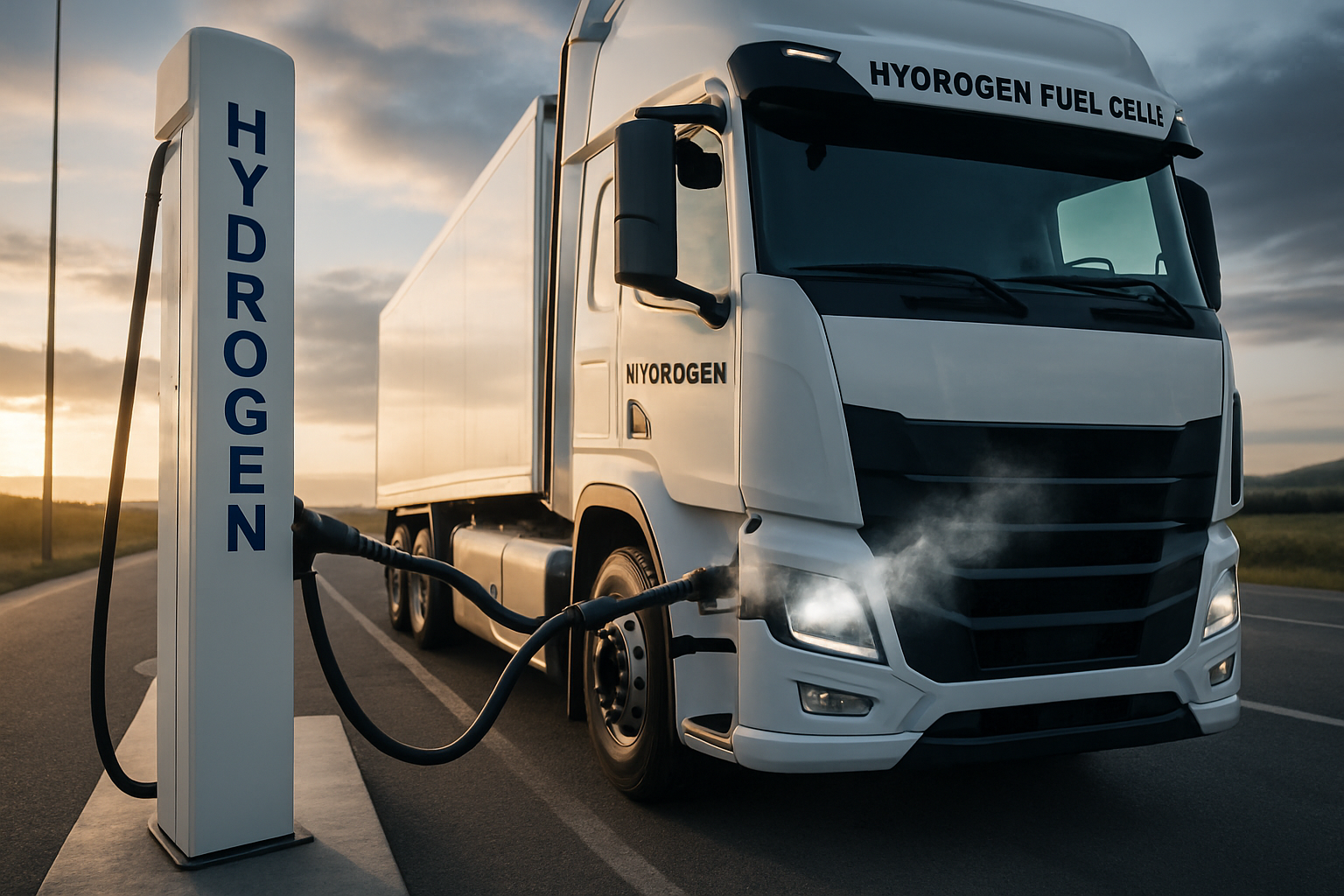Hydrogen Fuel Cells: The Quiet Revolution in Heavy-Duty Transport
Imagine a world where massive semi-trucks glide silently down highways, emitting nothing but water vapor. This isn't science fiction—it's the promise of hydrogen fuel cell technology in heavy-duty transport. As the automotive industry grapples with environmental concerns, hydrogen emerges as a potent solution for long-haul trucking, offering a blend of sustainability and practicality that's capturing the attention of fleet operators and environmentalists alike.

Breaking Down the Hydrogen Fuel Cell
At its core, a hydrogen fuel cell is an electrochemical device that converts hydrogen and oxygen into water, producing electricity in the process. This clean energy source powers electric motors, propelling vehicles forward without the need for traditional combustion engines. The only byproduct? Pure water vapor. This simplicity belies the sophisticated engineering that makes hydrogen fuel cells a game-changer for heavy-duty transport.
Infrastructure: The Missing Link
While the technology is promising, the lack of widespread hydrogen refueling infrastructure remains a significant hurdle. However, this is rapidly changing. Companies and governments are investing heavily in hydrogen corridors—strategic routes equipped with refueling stations. These initiatives are crucial for the widespread adoption of hydrogen fuel cell trucks, creating a network that could rival traditional diesel stations in accessibility and convenience.
Economic Viability: Crunching the Numbers
The economics of hydrogen fuel cells in trucking are complex but increasingly favorable. Initial costs for hydrogen-powered trucks are higher than their diesel counterparts, but operational expenses tell a different story. With lower maintenance needs and potential fuel cost savings, the total cost of ownership over a truck’s lifetime could tip the scales in favor of hydrogen. As production scales up and technology improves, these economics are expected to become even more attractive.
Environmental Impact: Beyond Zero Emissions
While the zero-emission nature of hydrogen fuel cells is their most touted benefit, the environmental advantages extend further. The production of hydrogen itself is becoming greener, with renewable energy sources increasingly used to power electrolysis—the process of splitting water into hydrogen and oxygen. This ‘green hydrogen’ represents a truly circular and sustainable energy cycle, potentially revolutionizing not just transport but entire energy systems.
Real-World Applications and Early Adopters
Pioneers in the trucking industry are already embracing hydrogen fuel cell technology. From port operations to long-haul routes, early adopters are proving the viability of this technology in real-world conditions. These trailblazers are not just testing the technology; they’re shaping the future of freight transport, providing valuable data and experience that will pave the way for wider adoption.
Challenges and Future Outlook
Despite its promise, hydrogen fuel cell technology in heavy-duty transport faces challenges. The need for specialized handling and storage of hydrogen, concerns about overall system efficiency, and competition from rapidly improving battery-electric technologies are all factors that could influence adoption rates. However, ongoing research and development are addressing these issues, with innovations in hydrogen storage, fuel cell efficiency, and production methods continually pushing the boundaries of what’s possible.
As we stand on the cusp of a transportation revolution, hydrogen fuel cells in heavy-duty transport represent more than just a technological shift—they embody a reimagining of how goods move across the globe. With the potential to dramatically reduce the carbon footprint of one of the most polluting sectors, while maintaining the efficiency and reliability that modern commerce demands, hydrogen fuel cells are poised to play a crucial role in the sustainable transport systems of the future. The road ahead may be long, but the destination—a cleaner, more efficient world of heavy-duty transport—is coming into view.





